Abstract
1. This paper presents a statistical analysis of the thresholds of test flashes viewed against zero, steady or transient backgrounds by peripheral vision. The method of threshold measurement is that of the Medical Research Council Report (Pirenne, Marriott & O'Doherty, 1957; Hartline & McDonald, 1943). The data are from the previous paper (Hallett, 1969b) and consist of k days' samples of n threshold measurements on an intensity scale of interval 0·087 log. The collection of a sample required 5-6 min and the samples were spread over a 3-month period.
2. The analysis suggests that the nature of biological variations is that the `instantaneous' frequency-of-seeing curve can occupy a variety of positions, or levels, scattered about its typical position on the log. energy axis. Change of the position of the curve for a given threshold task is most obvious when one compares threshold measurements obtained on different days, but this is not true day-to-day variation; the same sorts of change occur on the same day if the viewing conditions (independent variables) are changed and are perhaps due to shifts in the observer's signal/noise criterion K.
3. Two important consequences of the analysis are (i) the errors of visual threshold functions are worse than one method of calculating error suggests and (ii) it is possible to eliminate part of the biological variations from a particular sort of frequency-of-seeing curve and thus obtain a better estimate of the instantaneous curve which is the physiological function of prime interest.
4. Some possible causes of the biological variations are considered. The design of experiments is discussed. The method of the M.R.C. Report is to be recommended since it can be applied without prior assumptions about the value of the mean threshold or the nature of the errors.
Full text
PDF
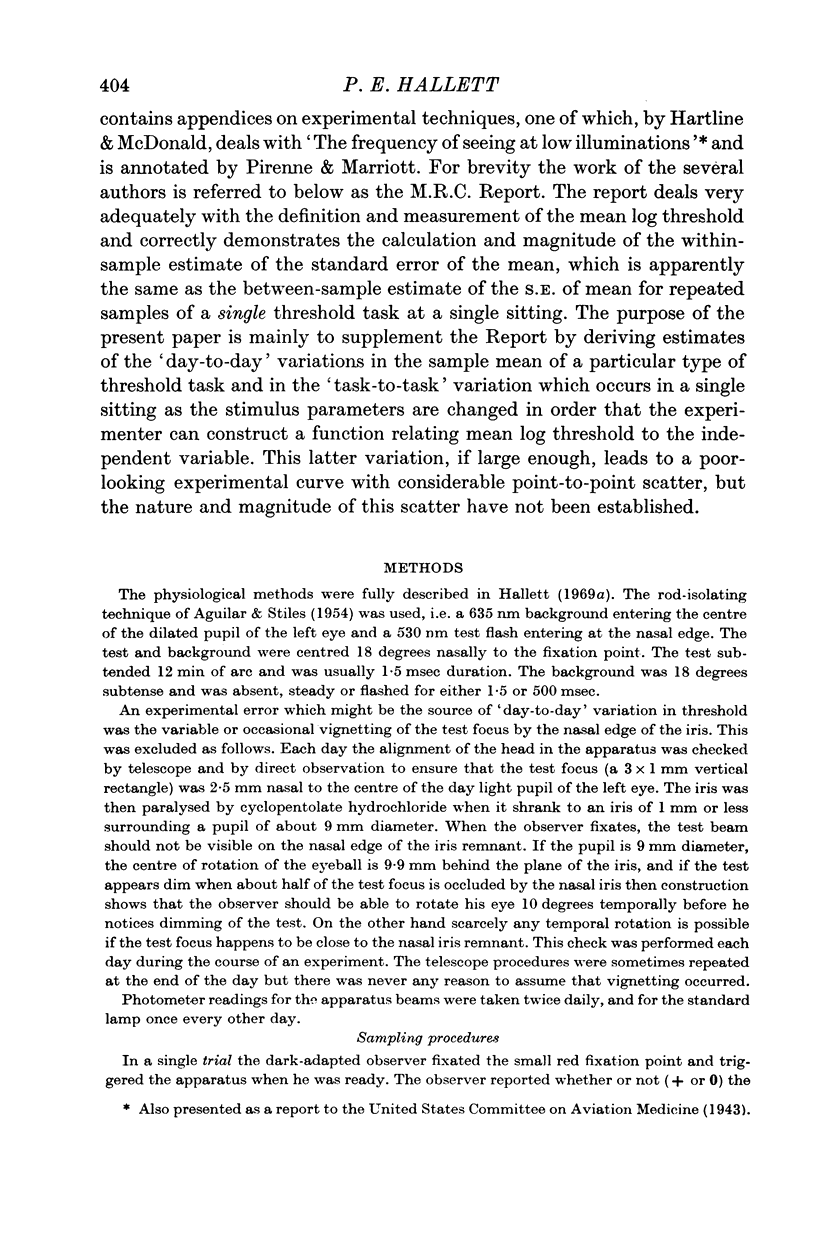
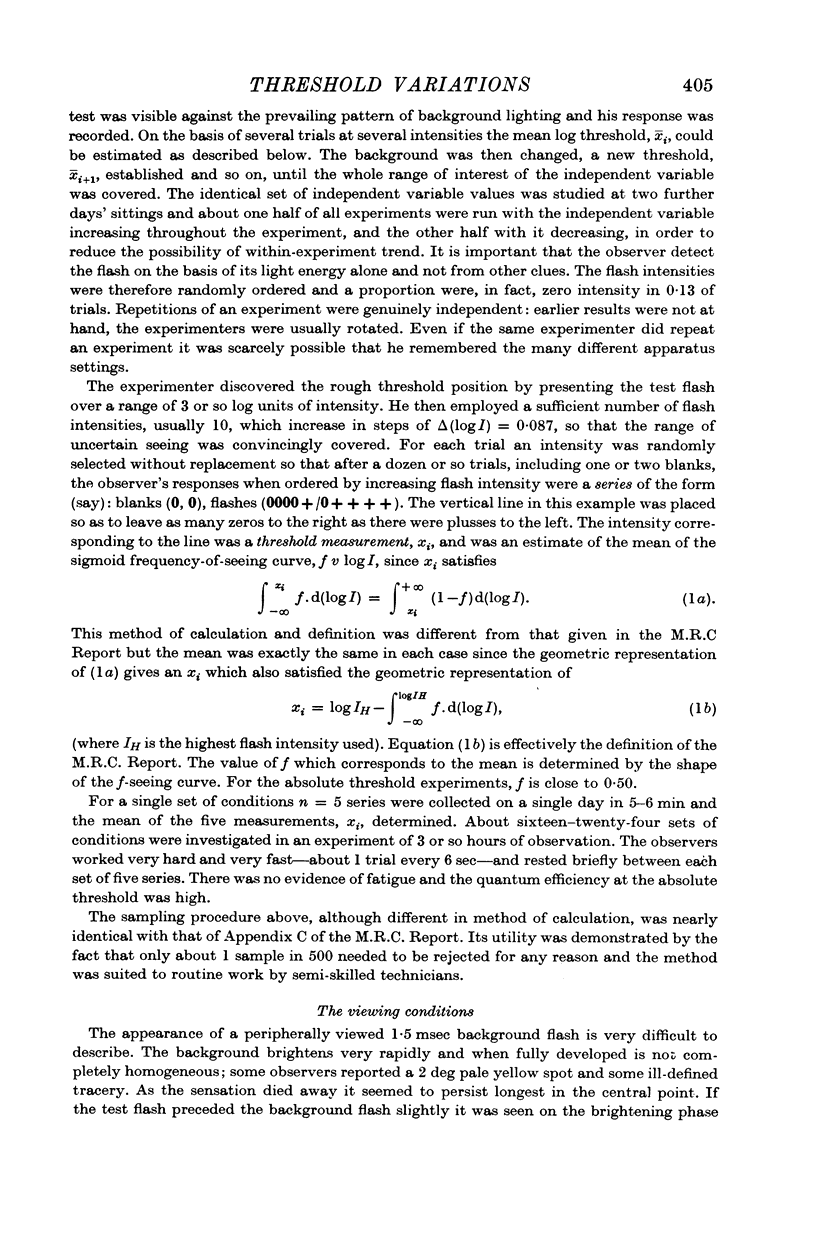
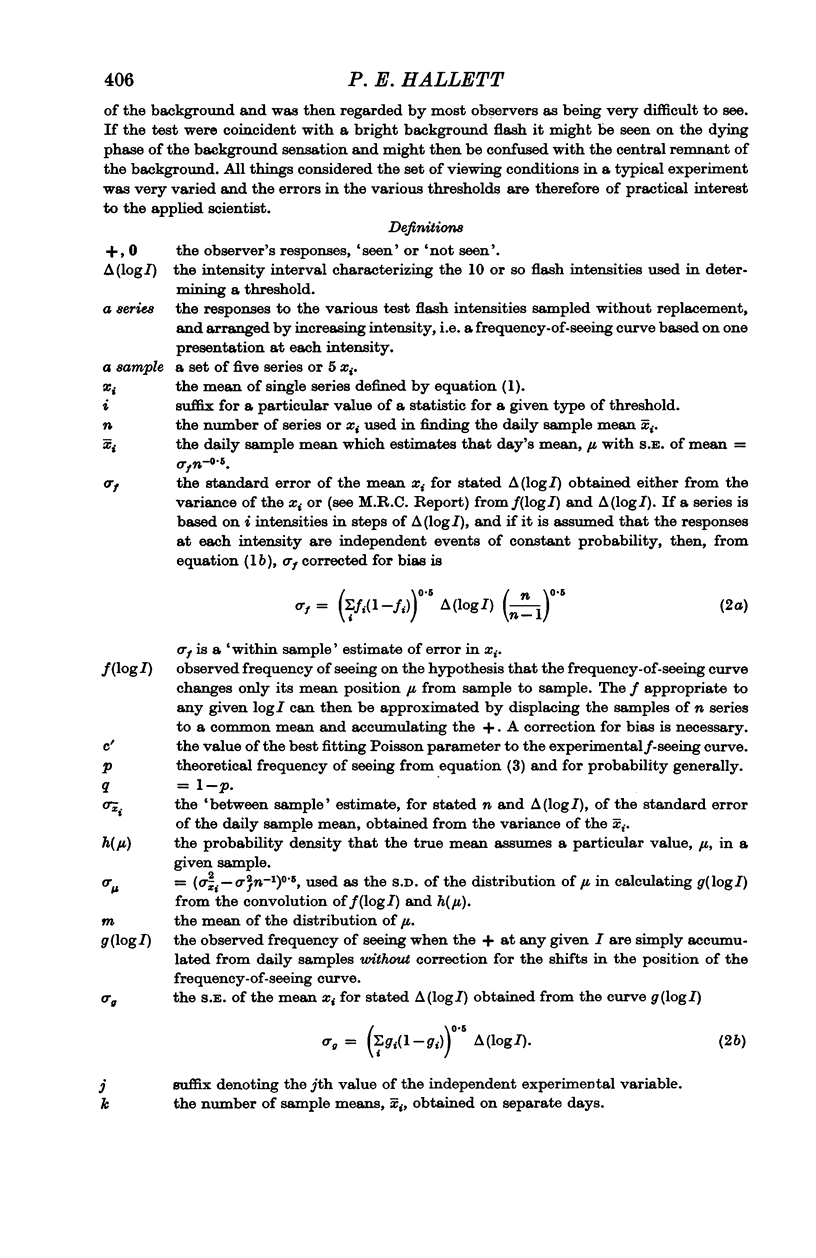
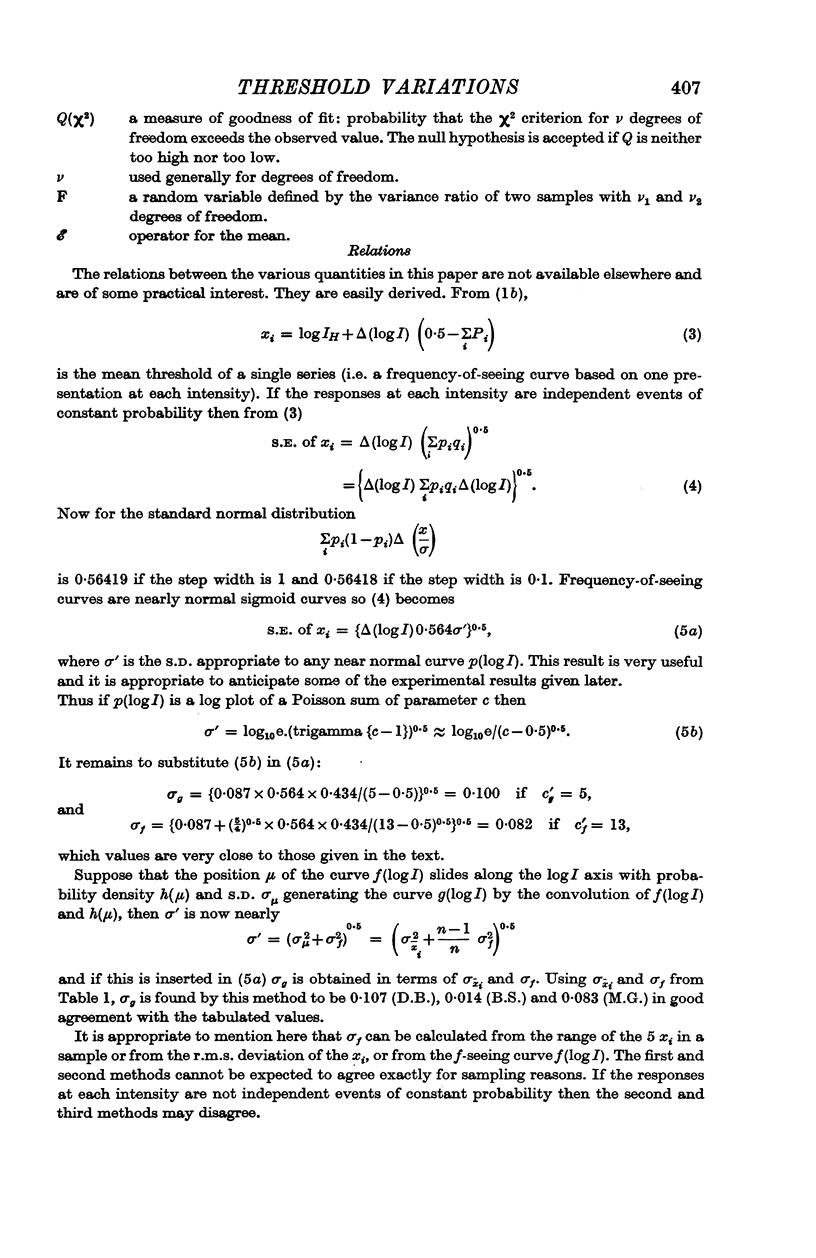
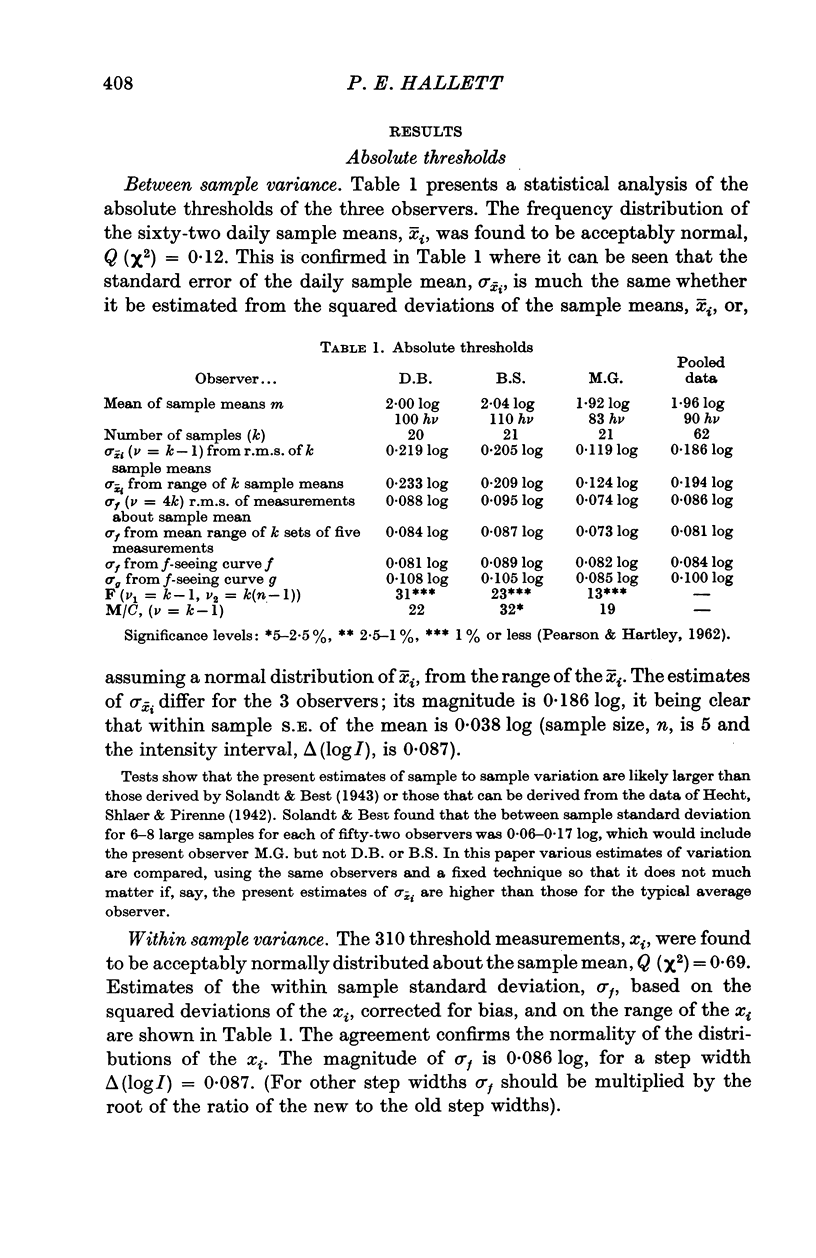
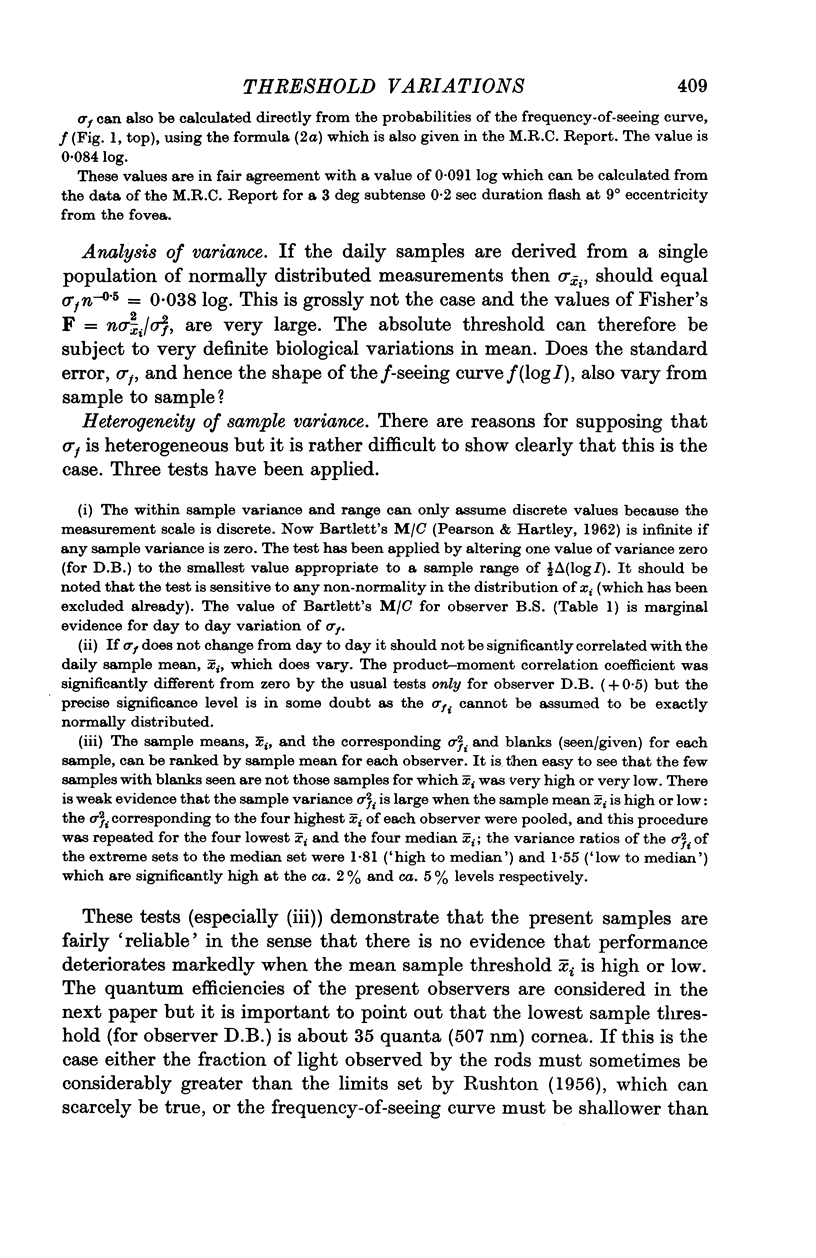
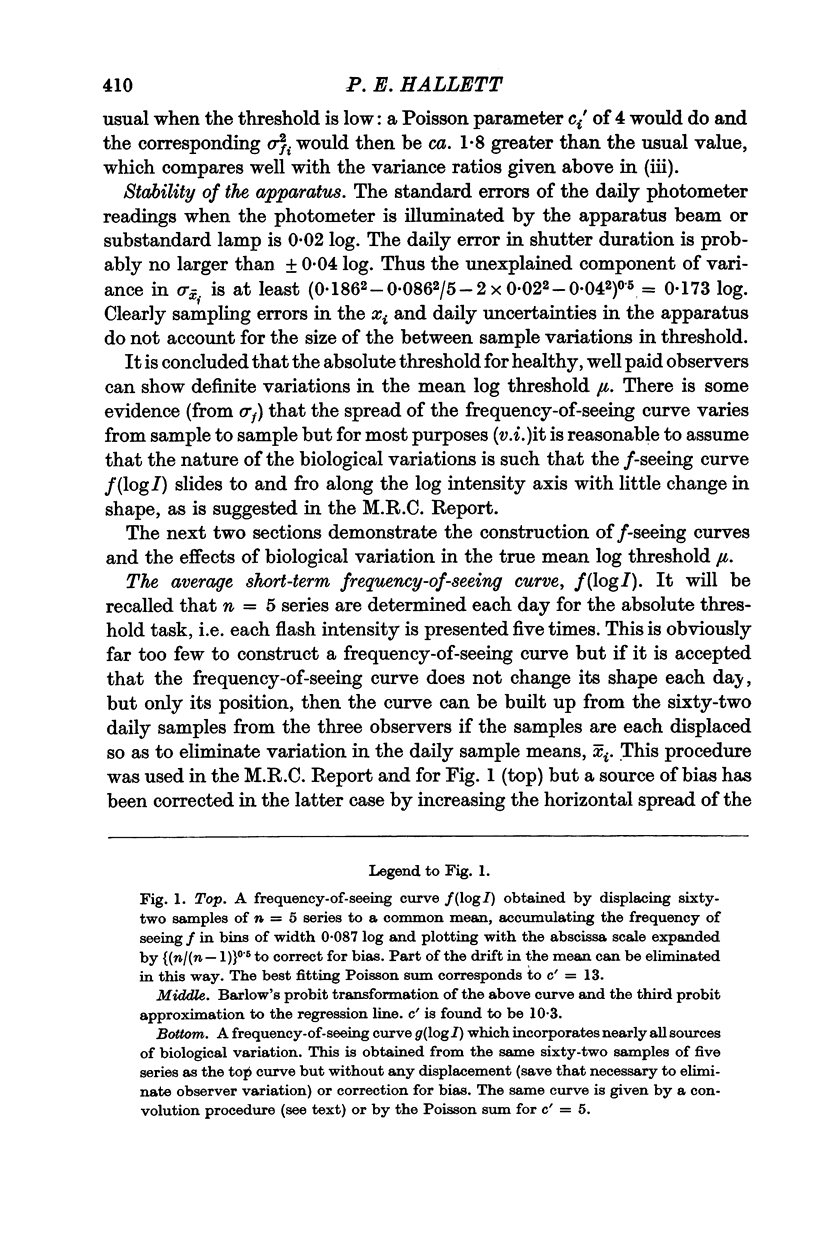

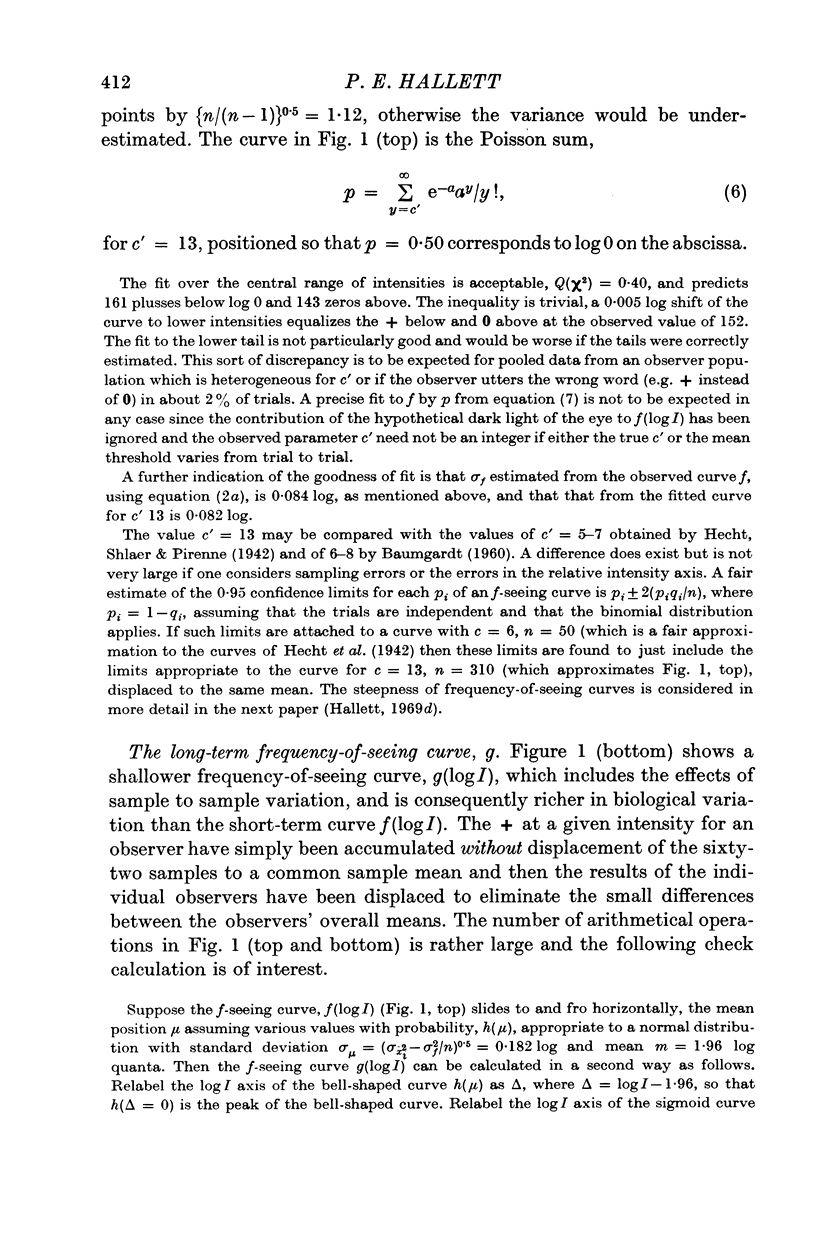

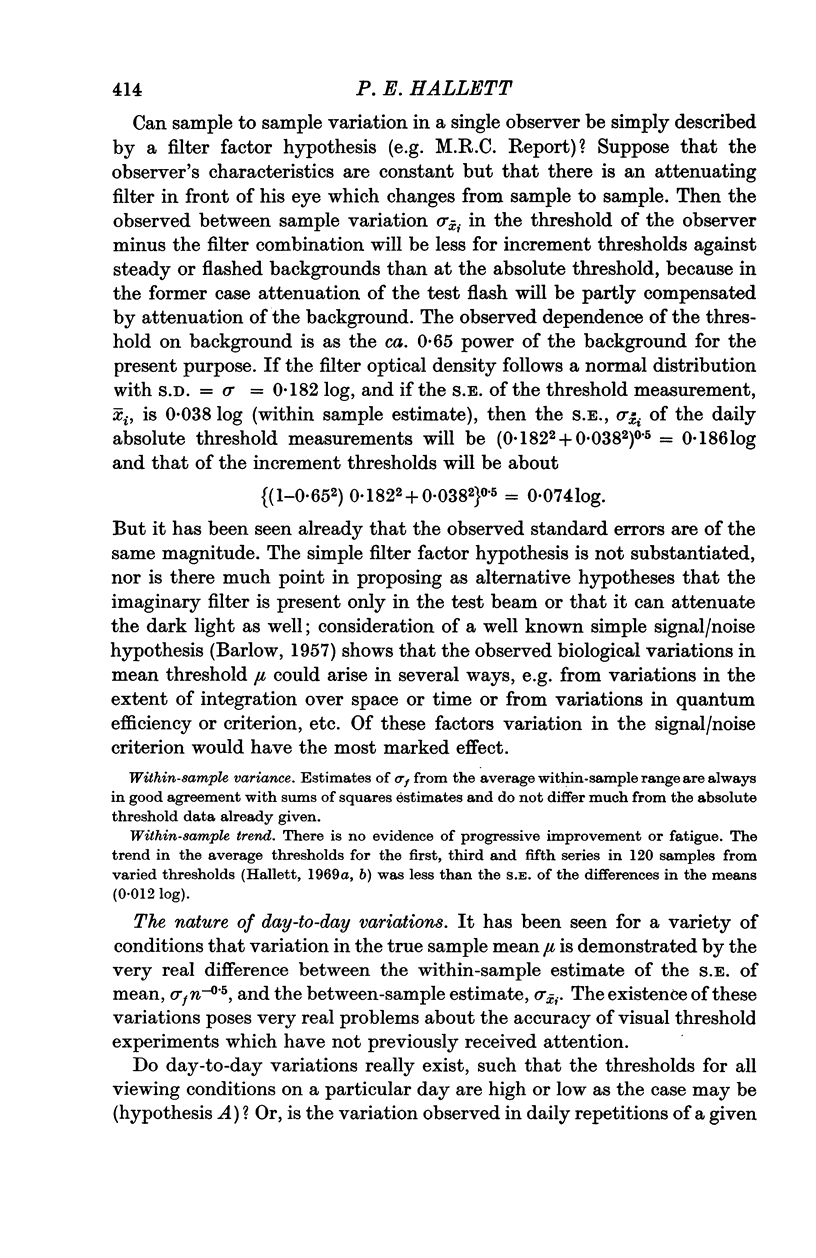
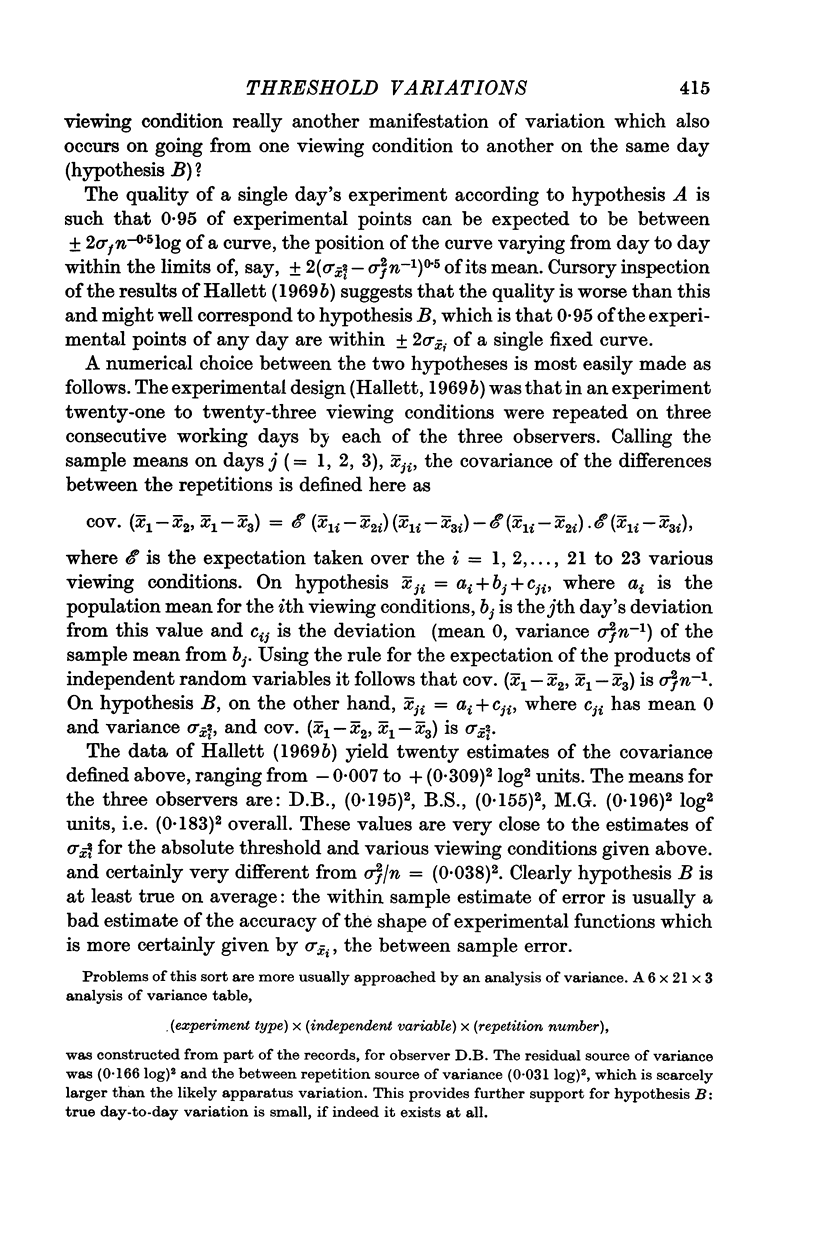
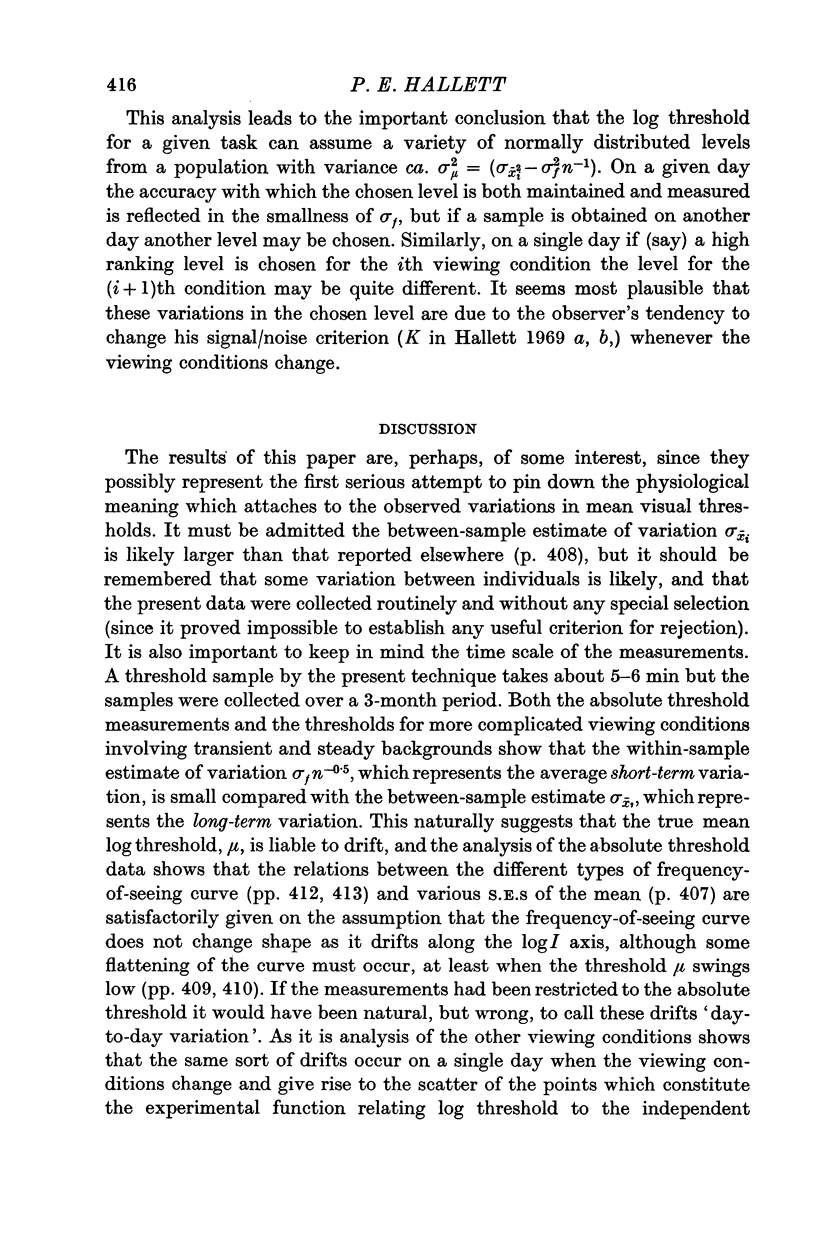
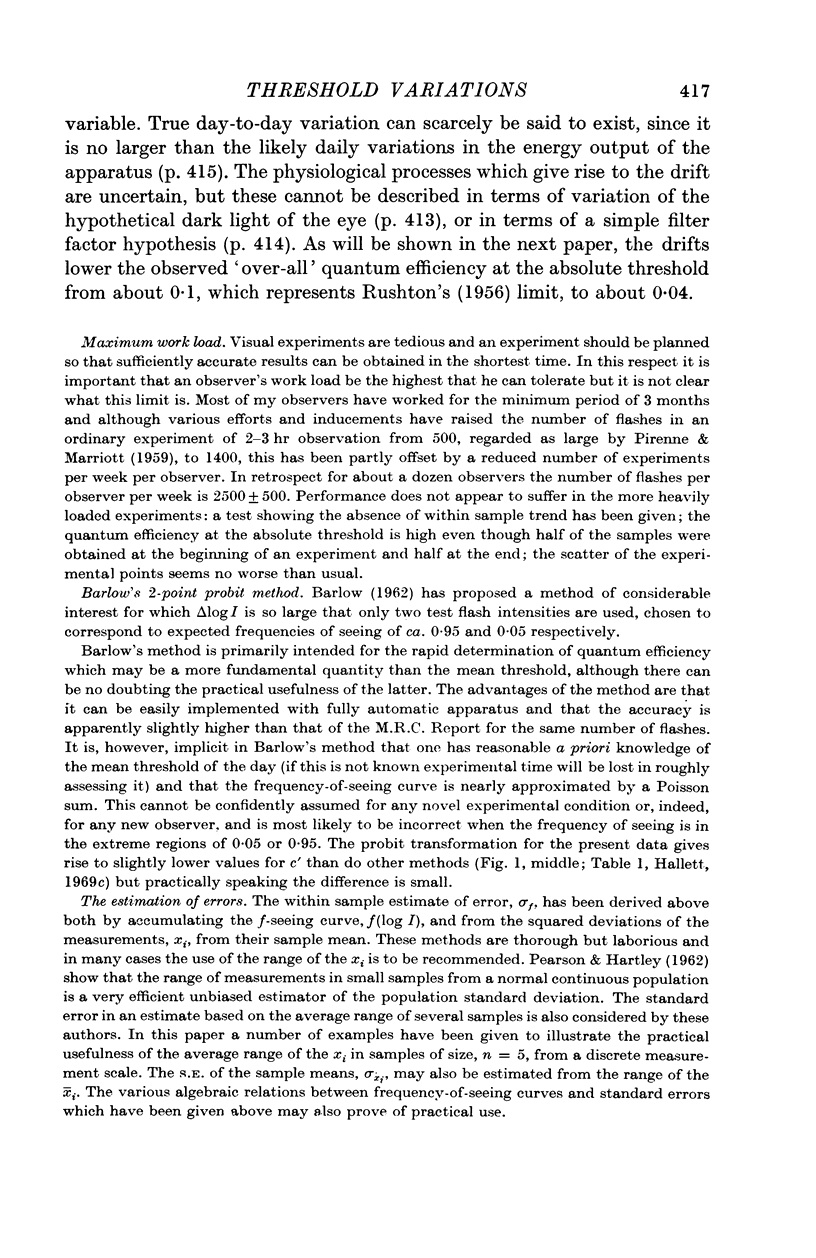
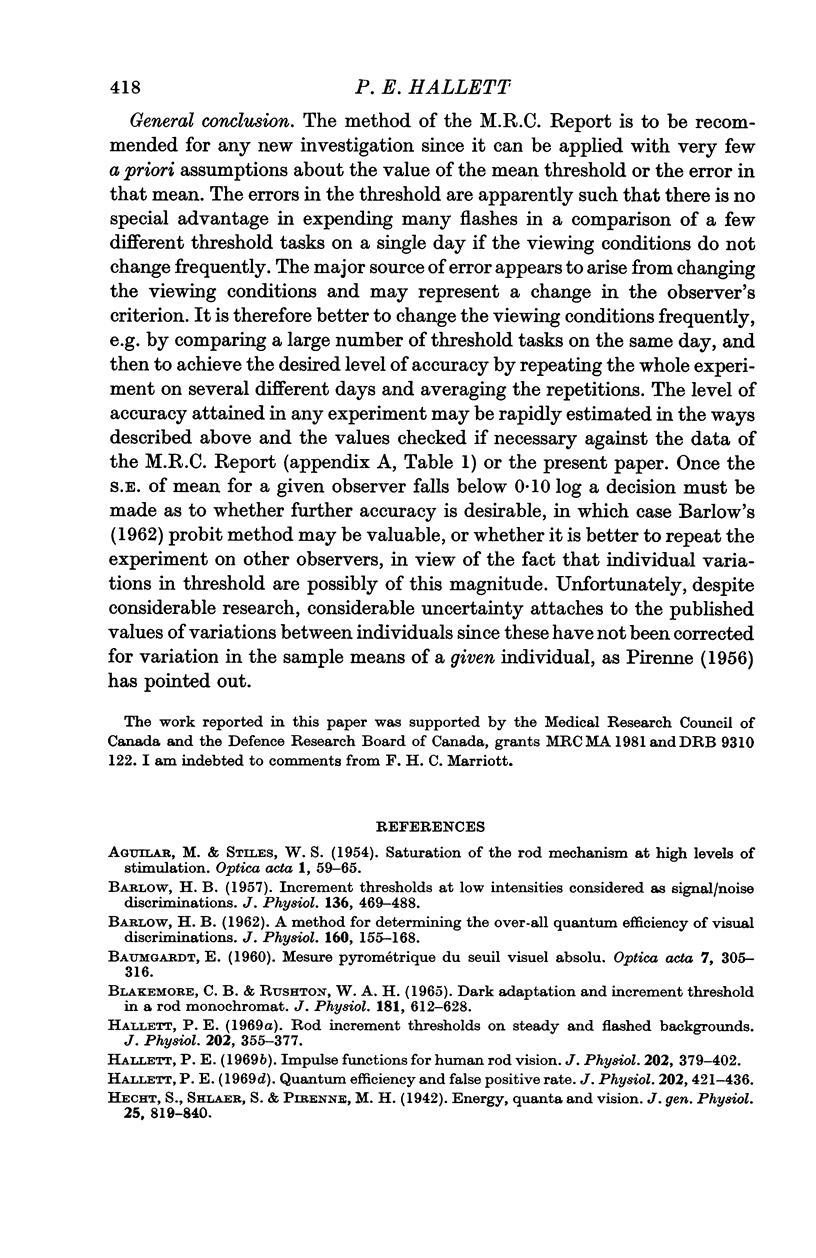
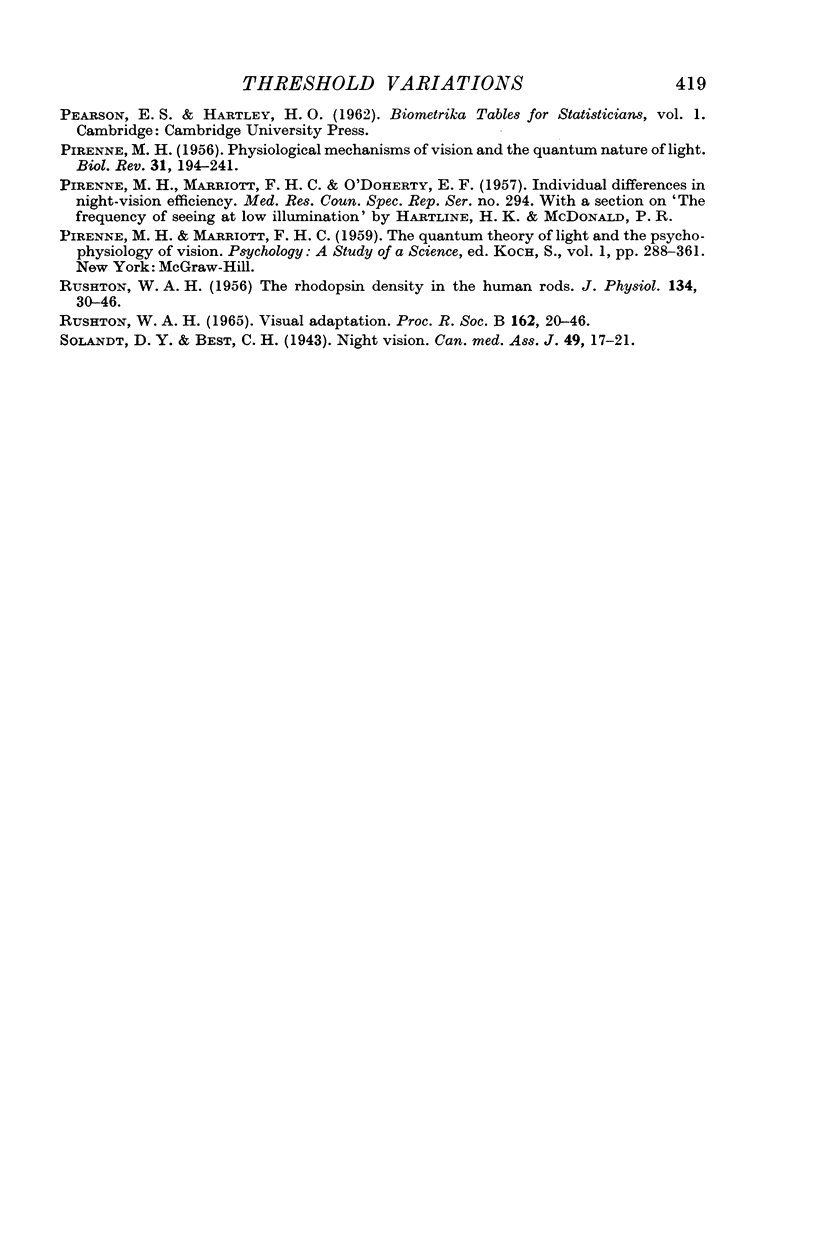
Selected References
These references are in PubMed. This may not be the complete list of references from this article.
- BARLOW H. B. A method of determining the over-all quantum efficiency of visual discriminations. J Physiol. 1962 Jan;160:155–168. doi: 10.1113/jphysiol.1962.sp006838. [DOI] [PMC free article] [PubMed] [Google Scholar]
- BARLOW H. B. Increment thresholds at low intensities considered as signal/noise discriminations. J Physiol. 1957 May 23;136(3):469–488. doi: 10.1113/jphysiol.1957.sp005774. [DOI] [PMC free article] [PubMed] [Google Scholar]
- Blakemore C. B., Rushton W. A. Dark adaptation and increment threshold in a rod monochromat. J Physiol. 1965 Dec;181(3):612–628. doi: 10.1113/jphysiol.1965.sp007786. [DOI] [PMC free article] [PubMed] [Google Scholar]
- Hallett P. E. Rod increment thresholds on steady and flashed backgrounds. J Physiol. 1969 Jun;202(2):355–377. doi: 10.1113/jphysiol.1969.sp008816. [DOI] [PMC free article] [PubMed] [Google Scholar]
- RUSHTON W. A. The rhodopsin density in the human rods. J Physiol. 1956 Oct 29;134(1):30–46. doi: 10.1113/jphysiol.1956.sp005623. [DOI] [PMC free article] [PubMed] [Google Scholar]
- RUSHTON W. A. VISUAL ADAPTATION. Proc R Soc Lond B Biol Sci. 1965 Mar 16;162:20–46. doi: 10.1098/rspb.1965.0024. [DOI] [PubMed] [Google Scholar]
- Solandt D. Y., Best C. H. Night Vision. Can Med Assoc J. 1943 Jul;49(1):17–21. [PMC free article] [PubMed] [Google Scholar]


